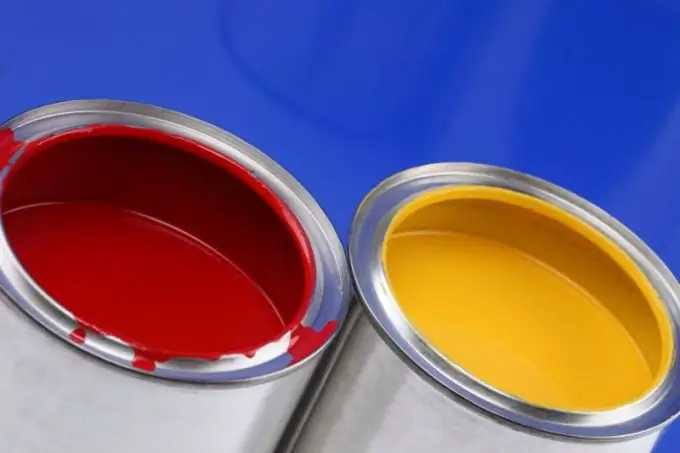Gouache is best used for painting autumn and summer landscapes, as well as still lifes with bright colors. This paint allows you to give the strokes richness and density, makes the depicted objects voluminous.

It is necessary
- - poster or artistic gouache;
- - cardboard with a rough surface;
- - brushes are flat and round in cross-section with a non-rigid bristle, optimally suited from pony hair;
- - palette;
- - a simple pencil and eraser for sketching.
Instructions
Step 1
Prepare the material on which you will draw. Give preference to thick, thick paper, and preferably cardboard, since it is more hygroscopic. With a wide brush dipped in clean water, treat the entire surface, leave to dry completely. After such a primer, the gouache will lie more evenly on the cardboard.
Step 2
Sketch the drawing with a simple pencil. Do not press on the lead, so that subsequently no grooves remain on the cardboard. Despite the fact that a dense layer of gouache will completely paint over the pencil mark, try to make thin, slightly noticeable lines.
Step 3
Prepare your gouache. If you are using fresh paints, stir thoroughly until a uniform consistency is obtained. If the gouache is dry, dilute it with a little water. You can also revive completely dried paint without losing its properties.
Step 4
Start painting with gouache. First, fill in large areas with a single color, such as the sky or water surface if you are painting a landscape, or drapery if you are painting a still life. Use flat brushes or round brushes for this (numbers 3, 4, 5).
Step 5
Mix paints to get the desired shades. To do this, you can use a plastic palette specially purchased from a children's art store, or a flat china plate.
Step 6
Pay attention to the details of your painting. To create lively volumetric strokes, take undiluted gouache with a brush, but remember that too thick a layer of paint can crack and crumble over time.
Step 7
Edit the bugs. Gouache allows you to apply a second layer and completely cover the previous one, even if it is slightly darker. But do not try to completely "redraw" the picture on top of the first coat of paint, the paper will get dirty.
Step 8
Use different techniques for applying paint to the paper, for example, using stiff brushes to create “grooves” from the bristles, or using more water for transparency. You can also use watercolor to paint individual elements, but remember that when mixed with gouache on paper, mysterious-looking stains are formed.
Step 9
Dry the finished painting and insert into a frame that matches the style and shade of the picture.






